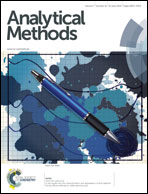Raman spectroscopy as a non-destructive tool to quantify the comonomer content in ethylene/1-olefin copolymers
Abstract
Ethylene/1-olefin copolymers, ranging from 1-butene to 1-octadecene, have been studied with Raman spectroscopy and the spectral changes upon comonomer incorporation have been analyzed. The Raman spectra of ethylene/1-olefin copolymers are characterized by a band ensemble in the lower frequency region below 1000 cm−1 which is a characteristic scattering from the comonomer segments. The spectra show bands due to scattering from the polyethylene sequences which also reflect the effect of the morphological changes occurring with the increasing comonomer content. By correlating the bands characteristic of the comonomer to those of the ethylene sequences, an internal intensity standard was identified. This also caters to the effect of the experimental parameters such as sample focus and spectral acquisition time for calibration of the comonomer content. This approach was also extended to amorphous ethylene/norbornene copolymers and a similar method for quantification was developed. The major advantages of this method are the minimum amount of sample preparation, and the low sample size, enabling even micrograms of the sample to be measured. Due to these, quantification with Raman spectroscopy is uniquely suited for online quality control and liquid chromatography which require a fast and robust analytical methodology.


 Please wait while we load your content...
Please wait while we load your content...